In the southeast of the Czech Republic, a few kilometers from the border with Austria and Slovakia, is South Moravia , a place whose name seems to be taken from a fantasy book in which sorcerers, knights, evil tyrants, heroes (or heroines), magical beings and exotic landscapes intermingle to enrapture the reader. And it is that when we set foot in these Czech lands, It seems that we have entered a magical world.
Part of the fault lies with a family of aristocrats who rooted their power , for centuries, in the central part of Europe. Their name: the Liechtensteins.
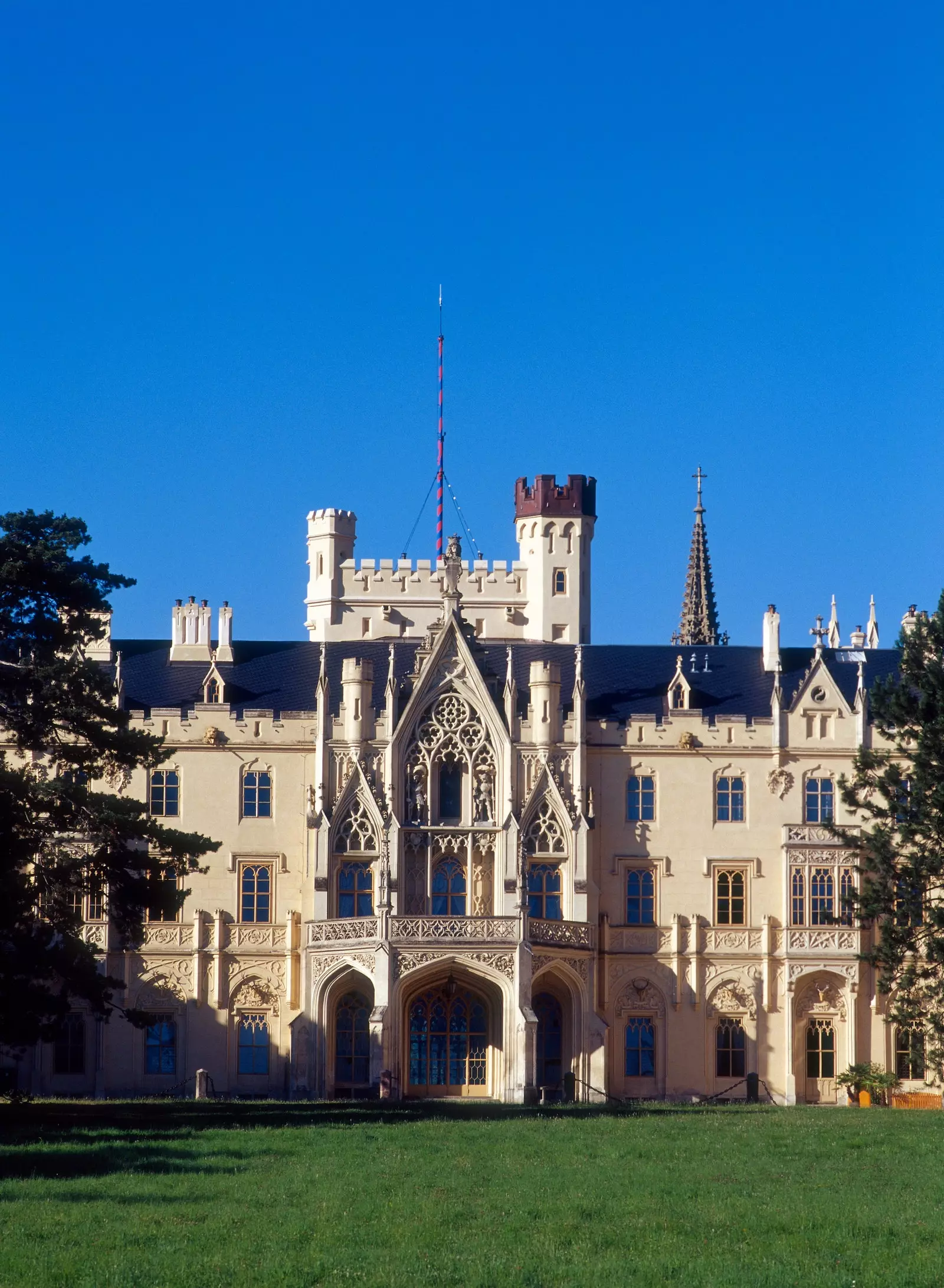
Lednice Castle.
Like any family of the high nobility worth its salt, the Liechtenstein family also gave birth to several eccentric characters who ordered the construction of works that even today inevitably attract our attention.
A good concentration of these works we can find them in an area of more than 200 square kilometers located between the towns of Lednice and Valtice . The beauty of the castles and gardens that are found there, wrapped in gentle hills crossed by rows of vineyards, is such that the place was declared, in 1996, Heritage of humanity by unesco.
THE CASTLE OF LEDNICE
They say that the small town of Lednice was in Liechtenstein hands between the first quarter of the 14th century and the end of World War II , when those lands became part of Czechoslovakia and the Russian army sent this family of aristocrats with German roots into exile.
Long before that happened, built Lednice castle and its splendid gardens , covering an area of almost 200 hectares , being among the largest parks in Europe.
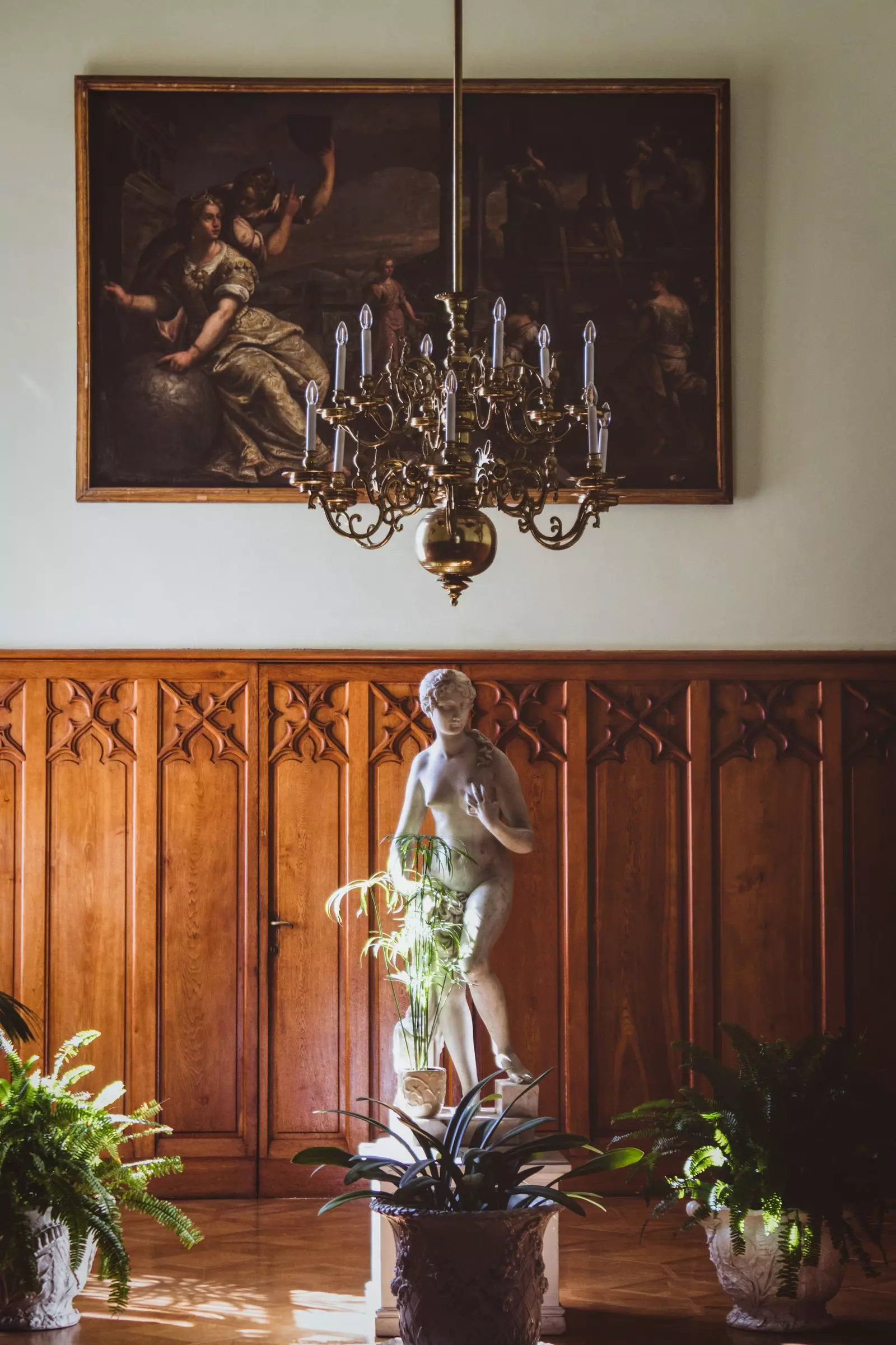
Interior of Lednice Castle.
Originally Lednice Castle it was created in renaissance style , to be remodeled later in the baroque style and, finally, to rebuild everything with neo-gothic look . The culmination of the work occurred after a long process that lasted for more than two centuries.
Lednice Castle consists of eight large wings and four patios , in addition to a greenhouse –full of tropical species and which is cared for daily by several gardeners– and the stables.
When we walk inside the building, we seem to hear again the sound of the violins in the luxurious ballroom , where a phantasmagorical and invisible choreography is about to begin. The bedrooms hide secrets of passions and betrayals unspeakable, while the magnificent library , chaired by a beautiful spiral staircase carved in wood, it treasures ancestral knowledge in more than a thousand volumes of incalculable value.
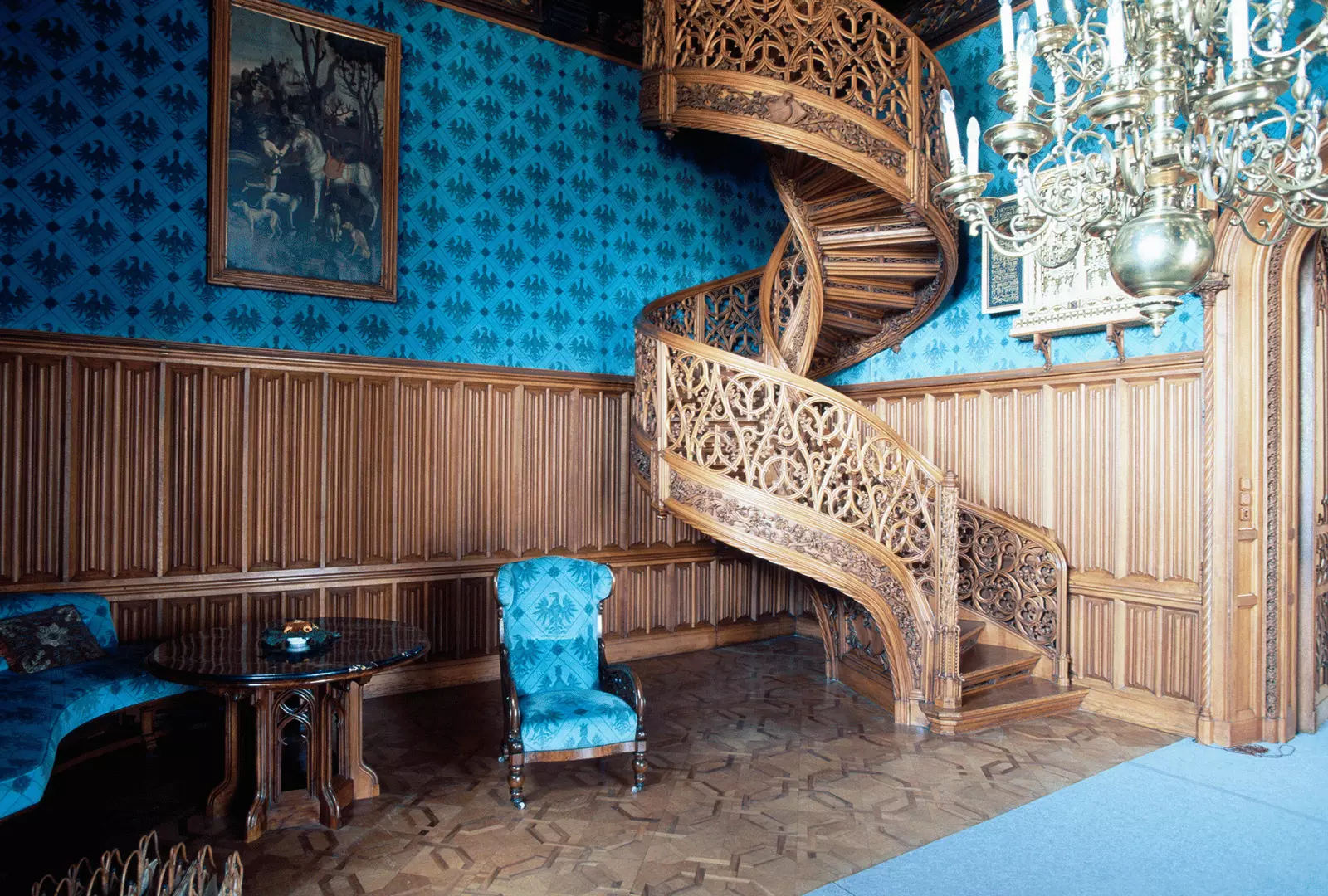
Interior of the castle of Lednice-Valtice.
Once outdoors, the immense gardens open up to welcome us to a picture more typical of a fairy tale in which everything is mixed with a fresh touch of nonsense.
Thus, in the distance appears, reflected in a pond, an Arab minaret 62 meters high . It was built between 1798 and 1804, and from its viewpoint –which we reached after ascending 302 steps of a spiral staircase– you get amazing views , not only from the entire Lednice-Valtice complex, but from the surrounding mountains and fields and even, on clear days, from the tower of Vienna's St. Stephen's Cathedral.
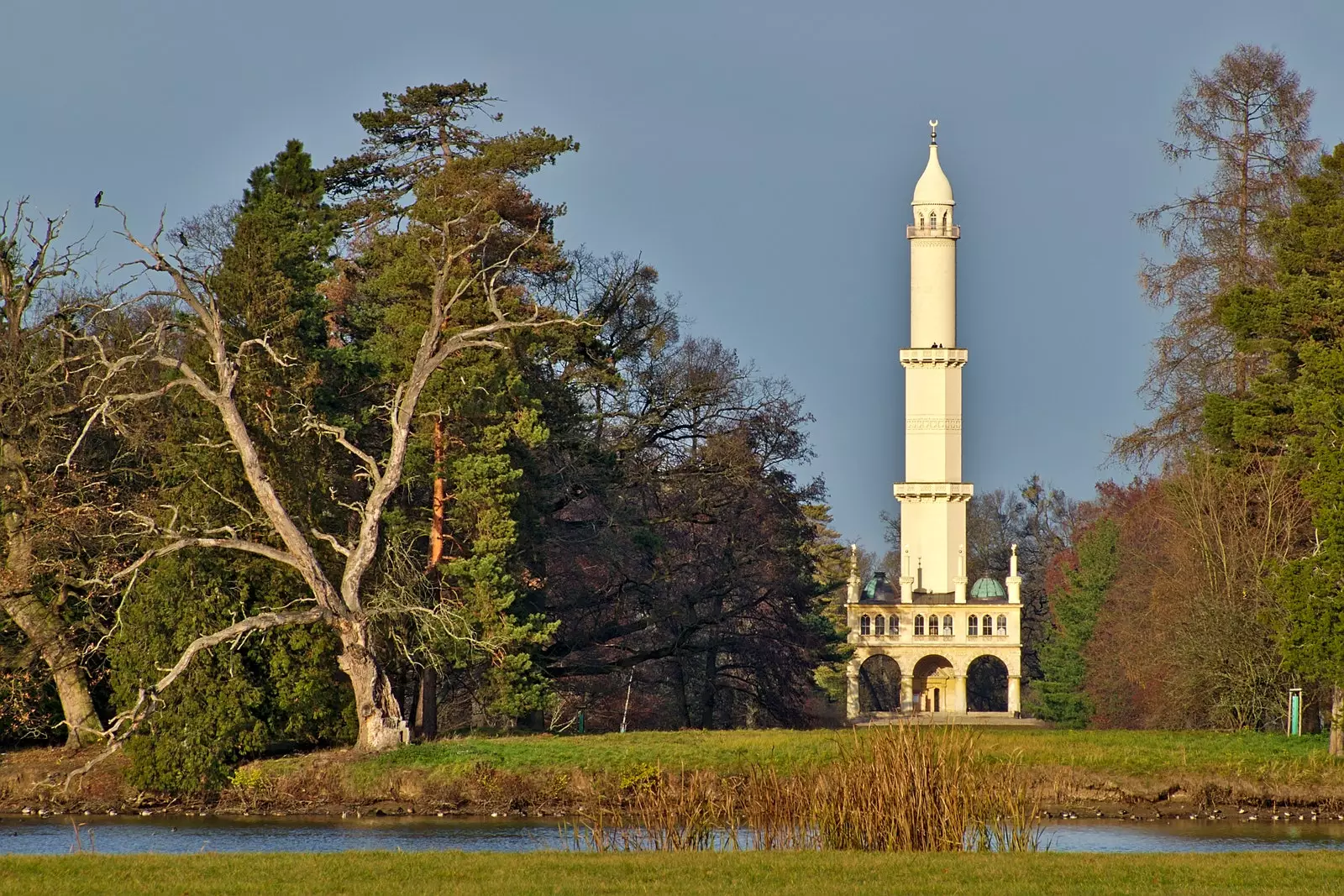
the minaret
Nearby is Janohrad (John's castle) that confuses us with its appearance of a medieval fortress in ruins. Actually it was erected in the 19th century by the eccentric Austrian architect Josef Hardmuth , as another romantic element of a complex that is almost saturated with them.
And it is that, strolling through those English court gardens we also come across a Venetian fountain, a Roman aqueduct, a Chinese pavilion and some artificial ruins. All of them priceless props for the imagination to fly and give us a great story.
PEARL OF EUROPEAN BAROQUE
A path of just over 7 kilometers connects the town of Lednice with that of Valtice.
The streets of Valtice emanate a bucolic halo which is accentuated when we find ourselves in front of the lavish palace-castle that was built there, in baroque style, in the 17th century. The original fortress – Gothic in style – was acquired and demolished in the 13th century. In its place was built, already in the XVI, a renaissance castle . The beauty of its wings was compared to that of butterflies, but, like these, its life was very short.
Since 1530, the Liechtensteins used the castle as one of their usual residences . Its interior decoration is impressive, as well as the beautiful 18th century chapel that features a Baroque organ by Lothar Franz Walther.
As in Lednice, the landscaped exteriors from Valtice are also a real gem.
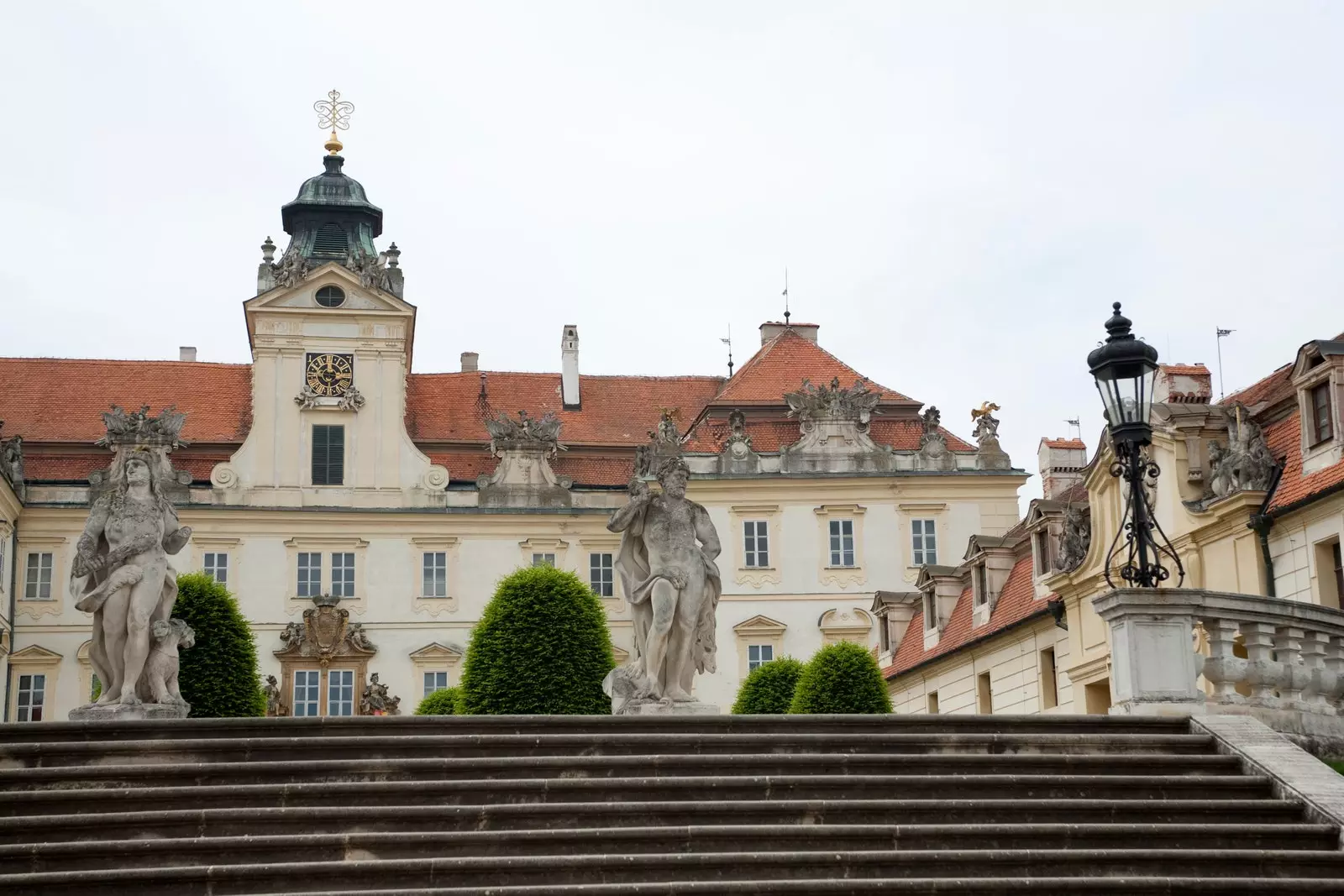
Valtice Castle.
About 3 kilometers northeast of Valtice, the Temple of Diana is presented as another great work by Josef Hardmuth . Actually, it is not even a real temple, but more looks like an old triumphal arch . The Liechtensteins used the site as a hunting lodge and carved an inscription, in Latin, dedicating the structure to Diana, the Roman goddess of the hunt.
Returning to the interior of the palace, a network of dark passageways makes its way into the bowels of it. However, far from being there beings that inspire us with terror, the aroma of good tempered broths irremediably attracts us.
WINE, AN EXQUISITE RARITY IN THE COUNTRY OF BEER
In the caverns of Valtice castle lies the National Wine Show of the Czech Republic . And it is that in the locality there is the only top school of oenology that exists in the country. An ode to wine in a land that is famous for its good and diverse beers.
The climate is more temperate in this part of the Czech Republic, and the vines thrive to illuminate some grapes that serve as the basis for wines, both white and red, of a not insignificant quality.
more than 90% of the wine produced in South Moravia is intended for domestic consumption , thus taking advantage of a certain protectionist tradition that began, at the beginning of the fourteenth century, the king Juan de Luxemburg, who prohibited that in Brno – most important city of South Moravia and great center of medieval power – Austrian wine was consumed in the period that went from the harvest months to Easter.
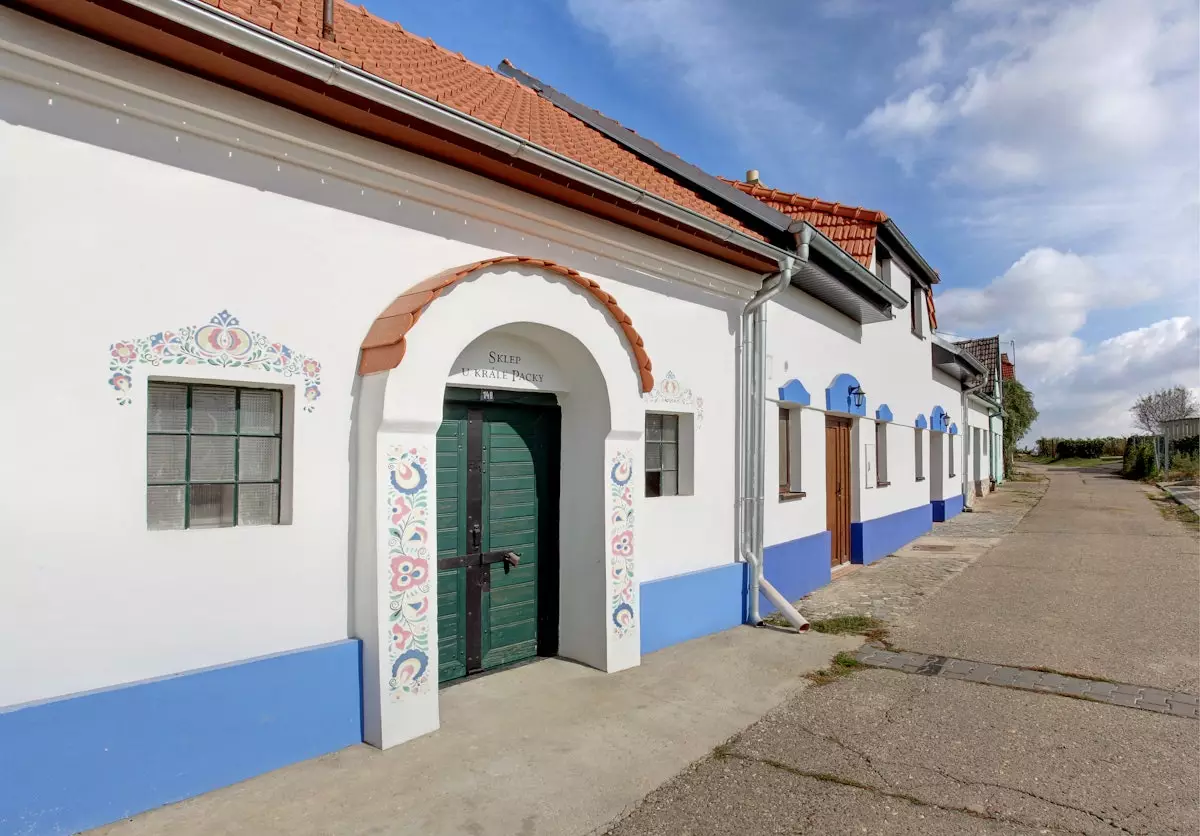
The wonderful streets of Kraví Hora.
We can learn about this historical passage and the evolution of wine in a room that, from the depths of a castle, expands its intoxicating flavor to an entire country.
But if we want to see something really curious, we must not stop approaching Kraví Hora , a true federal republic of wine come true . And it is that in the magical world of South Moravia dreams can become reality.
